Log houses are spectacular and for many of us a dream. I have to admit that it has been my dream for a long time, ever since I saw in a magazine such a house in a forest. Lately, thanks to documentary visits, I have had the opportunity to see how they are made, and the impression is even stronger. It is interesting to see what is involved in building a log house, how much work and time it takes and what needs to be taken into account for a solid and quality construction.
Log houses. Types of log houses
The manufacture of log houses is thousands of years old, wood being, along with stone and clay, one of the oldest building materials. This type of house is specific to areas with extensive coniferous forests, such as the Scandinavian Peninsula, Russia, Canada and the United States. Why conifers? Because they have straight trunks that can be used without too much work in wall construction.
Tree trunks have also been used in our country to build houses in areas with rich coniferous forests, but in our country traditional wooden houses are made of square beams. Such houses can still be seen in the northern part of the country - in Bucovina and Maramureș - but also in the Trotuș Valley or in the high area of Sibiu, where the old stables still shelter tired tourists.
Round wooden houses are not specific to our country, being "imported" from North America and Canada. Interestingly, we didn't get them from Russia or the Scandinavian Peninsula, which are much closer to us, but from America, where they were also "brought" by Russians and Scandinavians.
Log houses can be made from unhewn timber, i.e. from the peeled trunk of the tree without any further processing, or from hewn timber. The former are typical log houses, with each trunk different from the other, made like those of the past. Calibrated log houses are those made of equal-sized logs, processed by turning them in special machines to the same diameter. They have a uniform, less spectacular appearance.
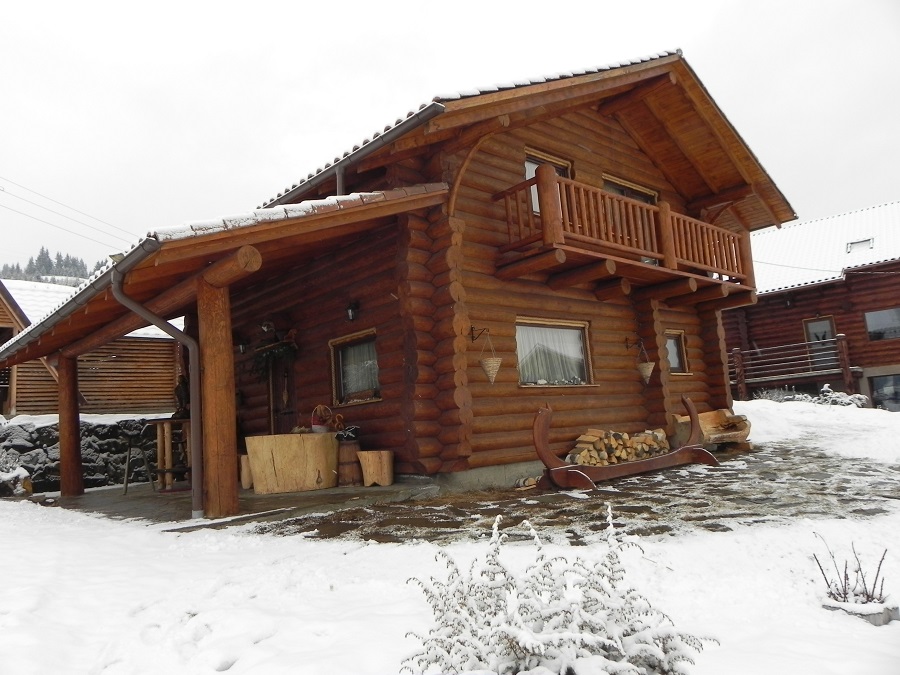
How log houses are built
By overlapping the peeled and processed logs to join at the ends to form the corners of the house. The workmanship is very important and the strength of the construction and the degree of insulation from the outside depend on it. It is done by hand, using a compass and drujbei or with the help of CNCs, in factories. The vast majority of Romanian manufacturers work in the traditional way, doing the machining and joints by hand, by cherting (machining the wood, notching, in order to join with another piece).
It all starts with the felling of the trees, which must be done outside the growing season, i.e. at the end of November - beginning of February, so that the wood contains as little water as possible. The lower the moisture content, the faster the wood dries out and the less cracks and warping.
Drying occurs naturally which is why it takes longer. That's why the working time for log houses is longer, with manufacturers talking 1-1.5 years until the red house (without doors and windows) is installed on the customer's site. Drying time is very important, and rushing the manufacturer doesn't help, it actually hurts. If the wood is not left as long as necessary to get rid of excess moisture, it does not stop but continues the process when it is part of the house. The changes will be much greater and problems like gaps between logs or sagging ceilings will occur.
The logs are stripped of their bark by hand, using round knives or steam. In the first case, the appearance is natural, the knife notches giving a very authentic look. When steam is used the appearance of the wood is smooth and even. After cleaning, the work for the joints is done. The logs are machined as the house goes up. The process takes place at the manufacturer's premises, where the house is first made. I say first time because the house is built twice, once at the builder's and a second time at the recipient's. After all the logs are joined together, the house is left to settle for a while, then the logs are numbered and labelled, the house is unpacked, loaded into machines and transported to the beneficiary's site where it is rebuilt.
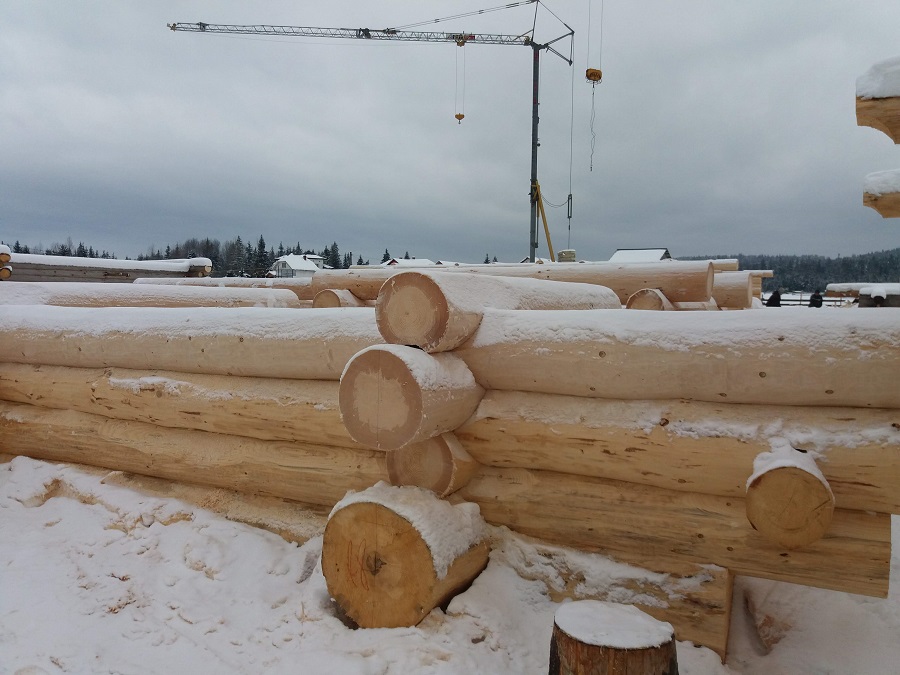
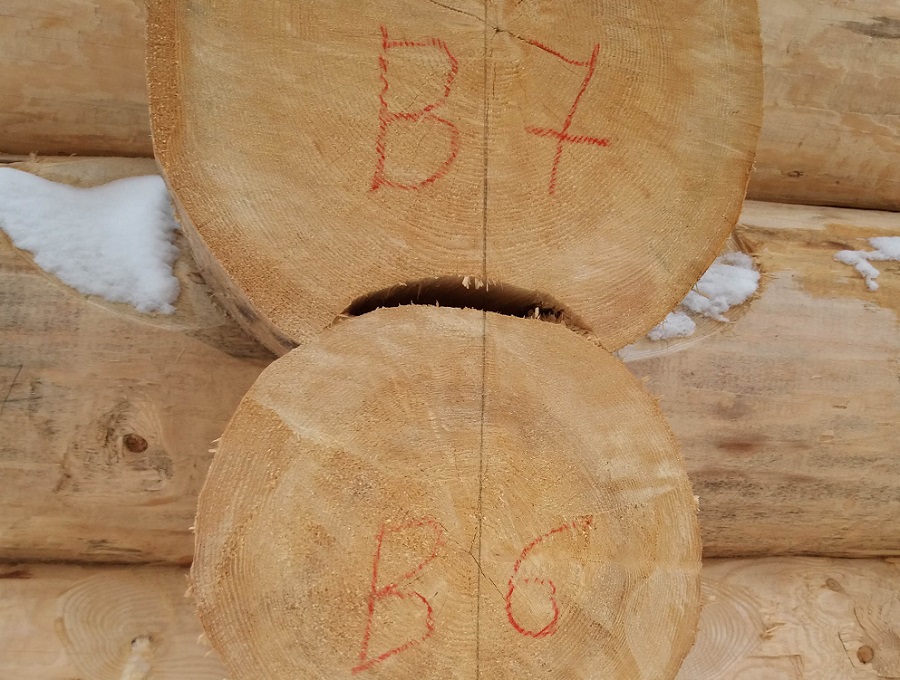
Types of joints for making house corners
Corner joints for log houses come in many types: Norwegian (Scandinavian), Canadian, corner, etc. Their choice depends on their aesthetic appearance, cost, durability and water resistance. In our country, the Canadian and Norwegian joint is mainly used. In factCanadian mbinationis an improvement on the classic Norwegian one. The improvement was made by Canadian log home builder Del Radomske, a well-known teacher and innovator in the field. He made a cut in the log to allow the logs to be laid down and compacted as they dry and the construction is cut. The cut along the log also prevents the log from bending. The joint is designed to become much tighter and stronger as the timber dries and reduces in size. For this reason it has become known and used in many parts of the world.
When the house is installed at the customer's site, a cheder is fitted in the cut-out along the log to prevent air and damp from entering (as with windows) and insulation is fitted inside. Sheep's wool insulation is generally used to make everything as natural as possible, but it is not the only insulation that can be used.
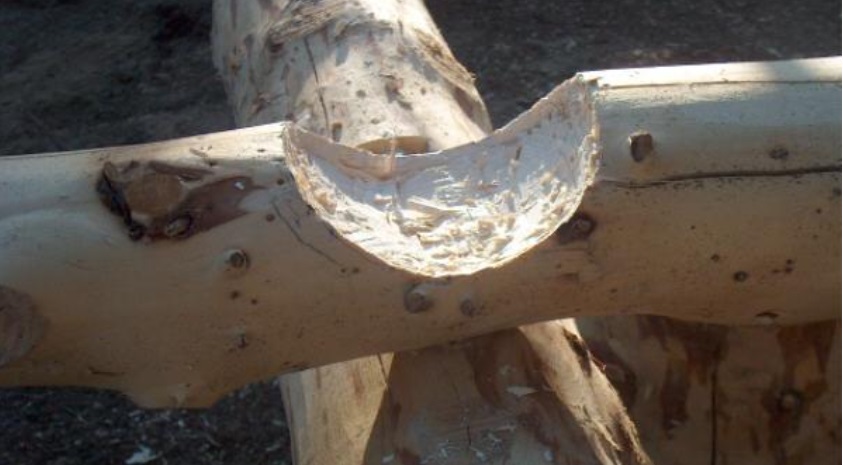
Norwegian or Scandinavian splice, as it's also called, consists of a round cut made in the top log that fits snugly over the one below it. A measuring tool called a compass and saw is used to make this cut. When an adjustment of 2-3 cm is needed for a perfect fit, the wood is sanded. The joint is not very precisely defined in shape and size, and variations on the same theme can be made 🙂 The principle is the same.
Another islandThe timber used in log houses is the corner timber. It is made with logs laid vertically on the corners and into which the processed ends of the horizontal logs enter, thus forming the wall. The processing is similar to that for jointing of stock and hollow. I haven't found any Romanian manufacturers who make such joints in the houses they build.
Log driving - house laying
The most important issue to keep in mind when making a log house, but also when owning one, is tasing. It occurs due to the dimensional decrease of the wood through loss of moisture and the logs' own weight. This is why the house must be left to settle for a while.
The phenomenon of moisture loss is natural and occurs as soon as the tree is cut. Water escapes until equilibrium is reached with the humidity of the surrounding environment. This means that if a log house that has reached equilibrium in an area with a certain relative humidity is moved to an area with a different humidity, it will start to settle again until equilibrium is restored. Experts say it takes 3-5 years for the wood to reach equilibrium humidity, time being different from species to species. During this time, cracks appear in the wood and its size decreases.
Due to the laying of the wood fibre along the tree the dimensional decrease is important in the radial direction, leading to a decrease in the circumference of the log, but negligible in the longitudinal direction (along the log). The dimensional decrease causes the logs to settle and the house to be shaved. The settlement can reach 5% of the original height of the house. When the house isn't done right, cracks can appear in window frames, doors won't close, the height of stair treads becomes uneven, or ceilings can sag.
That's why the house needs to sit for a while at the manufacturer without doors and windows fitted. Experts say this period should be between 6 and 12 months. To shorten the period, threaded rods can be fitted to the walls to force the weathering. If the rods have springs, tightening is automatic. If not, manual tightening is required every 5-7 days. With rods the waiting time is reduced to 3-6 months.
It does not mean that after this time the house will stop working, only that it has largely settled down and further movements are much less. This is why log houses need different construction solutions compared to ordinary houses:
- joints above windows and doors so that the log is not in direct contact with the window frame or door frame
- the installation of windows must be done by specialised companies that have systems that allow for possible tiling
- in the case of houses with a loft or upper storey and wider open spaces, it is advisable to install downstands on the ground floor to prevent the ceilings from sagging
- if tiling is installed on bathroom or kitchen walls, it should be laid on plasterboard walls separated from the wooden wall and with a space left at the top.
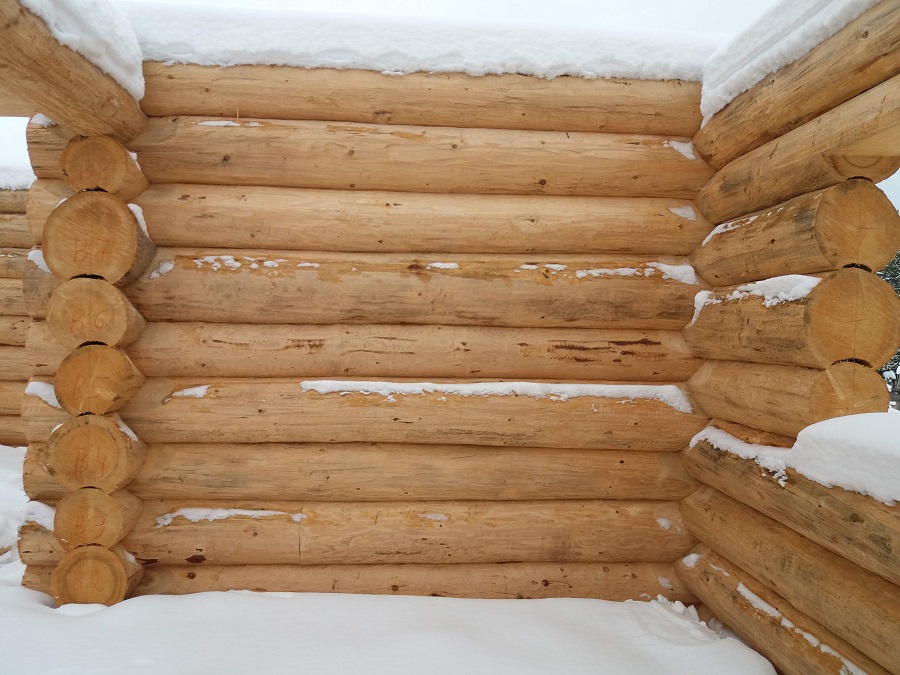
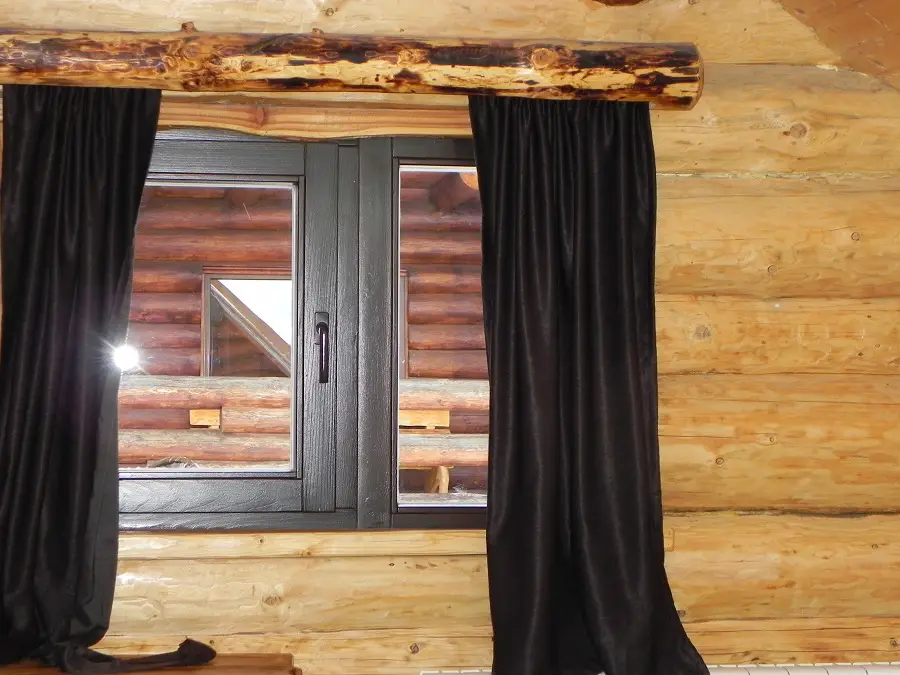
Advantages of a log house
A well-made log house will keep you out of trouble so you can enjoy the warm and pleasant look of wood. In addition to known advantages of a wooden house, the log one comes with pluses:
- It is the strongest type of house thanks to the very solid corner joints. It is said that in such a house, if you are not welcome, you can enter only if you have a chainsaw. If a bulldozer tries to push it down, he will succeed in moving it, not in putting it down.
- It is the most resistant type of construction in case of earthquake considered to remain standing even in earthquakes of 8.5 on the Richter scale.
- Indoor air is always very pleasant due to the permanent exchange of moisture between the wood and the air inside.
- It doesn't heat up hard, and the heat is persistentlong after the heat source is switched off.
- Thanks to the pleasant appearance does not need any special finishes, neither outside nor inside. Protection with oil on the inside and with pigmented oil or varnish on the outside is sufficient.
I have been in such a house in Vatra Dornei and learned what thermal comfort means in a well-made log house. The house had been unheated for 2 weeks, during which time the outside temperature had frequently dropped below -10ºC at night. Inside the house it was 13-14ºC according to the thermometer, but it didn't feel cold. The exchange of moisture between the wood and the air made it a pleasant atmosphere inside, far from "freezing". The house was on the tourist circuit and the owner lived next door, also in a log house. The house was from 2011 and he had nothing but praise for the comfort inside.
There are log house manufacturers in Romania working for both domestic and foreign customers. If you have any questions or concerns about log houses, please leave them in the dedicated area below. I will certainly answer you.























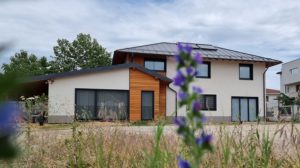
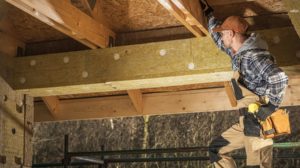

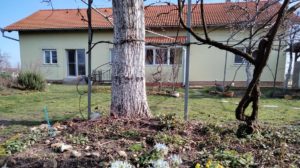

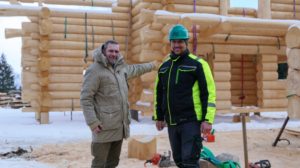

How much does a solid wood house cost?
[...] Joining and finger-jointing of wood in log houses [...]
Good evening, we bought 6 months ago a log house in Fălticeni, Suceava County, our questions would be about solutions for thermal insulation (we used natural wool between the logs), how can we protect / treat the wool outside?
The second would be in relation to the space upstairs between the ceiling and the logs, which is due to the wood drying out when we turned on the heating, what solutions would be to fill the spaces?
Thank you very much for your help.
Hello!
Unfortunately, it's not a simple problem that anyone can solve. You should ask the person you bought the house from for help. Before the logs are assembled, they are processed and the lengths are cut. As they dry, the house is sheared and the wool is trapped inside ensuring watertightness. If the bindings are not done correctly, gaps appear between the logs when the logs are pressed (you can see them out) and the wool doesn't help much. In addition, the decay continues for 2-5 years and even if you apply plaster or clay to the wool, it will crack and the gaps will reappear. The same goes for the upstairs space.
My advice is to contact the manufacturer you purchased from or another log home manufacturer to provide you with a future-proof solution.